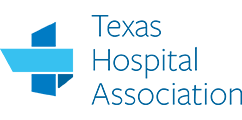Cedar Crest Hospital & Residential Treatment Center helps individuals who are struggling with schizophrenia find long-term recovery. Located in Belton, TX, Cedar Crest is the leader in mental health care.
Understanding Schizophrenia
Learn about schizophrenia
Schizophrenia is a chronic, severe mental health condition that is characterized by distortions in the way a person thinks, acts, expresses emotion, relates to others, and perceives reality. Schizophrenia is the most chronic and disabling of the mental illnesses; people with schizophrenia face tremendous difficulties at work, school, in relationships, and functioning in society. Untreated schizophrenia can leave a person socially isolated, frightened, and alone. Three major subtypes of schizophrenia are classified based upon their most prominent symptom, and include:
Disorganized schizophrenia often has an earlier age and slow progression of onset. This type of schizophrenia has symptoms of disordered speech, disorganized behavior, and blunt, inappropriate emotional expressions.
Paranoid schizophrenia: The defining feature of this disorder is a mixture of absurd, suspicious ideas or beliefs. These strange ideas typically revolve around a disorganized theme or story that remains consistent over time.
Catatonic schizophrenia is characterized by movement disturbance – either a decrease or increase in motor activity. A person who has catatonic schizophrenia may have challenges moving, inability to stop moving, abnormal movements, or behavior of repeating things other people say or do.
While schizophrenia is a chronic, incurable disease, this disorder is usually controlled well with proper treatment.
Statistics
Schizophrenia statistics
An extremely severe, chronic, and disabling disorder, schizophrenia affects 2.4 million people over the age of 18 (or about 1% of the population) in the United States. It’s been estimated that 40% of people with schizophrenia are untreated each year.
Causes and Risk Factors
Causes and risk factors for schizophrenia
It’s now understood that schizophrenia is not caused by a single factor. Rather it is the interplay of a variety of factors, such as genetic, physical, environmental, and risk factors. The most common causes and risk factors for schizophrenia include:
Genetic: It’s been long understood that schizophrenia runs in families. While the disorder occurs in about 1% of the population, in people who have a first-degree relative with this disorder that percentage jumps to 10%.
Physical: Researchers believe that an imbalance of the interrelated, complex structures and chemical reactions of the brain play a role in schizophrenia. Additionally, the brains of people who have schizophrenia vary from those who do not have the disorder. For example, the ventricles, the fluid-filled cavities in the center of the brain are larger in those with schizophrenia.
Environmental: It’s believed that prenatal exposure to viruses, toxins, or maternal malnutrition, particularly during the first or second trimester of pregnancy, can increase the likelihood that a person may develop the disorder.
Risk Factors:
- Older age of the father
- Usage of psychoactive or psychotropic drugs during teen to young adulthood years
- Increased immune system activation
Signs and Symptoms
Signs and symptoms of schizophrenia
Symptoms and signs of schizophrenia tend to begin between the ages of 16 and 30; diagnosis very rarely occurs in children or people over the age of 45. It can be difficult to diagnose schizophrenia in teens, as many of the early-onset symptoms are strikingly similar to those exhibited by the teen years. Common signs and symptoms of schizophrenia may include:
Positive symptoms are psychotic behaviors not seen in healthy individuals. Positive symptoms – which come and go – cause a person with schizophrenia to lose touch with reality. Positive symptoms include:
- Hallucinations – Things a person hears, sees, smells, or feels that no one else experiences. Voices are the most common type of hallucination and may instruct a person to perform certain tasks or warn the person of danger. Additionally, hallucinations can include seeing people or things that are not there, smelling odors undetectable by others, and feeling things like being touched while alone.
- Delusions are false beliefs that remain unfixed even in the face of evidence that the delusions are wrong, and are not a part of a person’s culture. People with schizophrenia may have bizarre delusions, such as believing that people on television are sending special messages to them.
- Thought disorders are unusual, dysfunctional ways of thinking. People who have thought disorders may make up neologisms, or meaningless words.
- Disorganized thinking, a form of thought disorder, occurs when a person has trouble organizing thoughts or connecting them in rational fashions.
- Thought blocking occurs when a person stops talking in the middle of a statement because he or she feels as though the thought had been taken from his or her head.
- Movement disorders occur on a spectrum of agitated body movements. Some may repeat certain motions over and over, while others may become catatonic. Catatonia is a state in which a person doesn’t move or respond to other people.
Negative symptoms are associated with disruptions to normal emotions and behaviors, and are often hard to detect as a part of schizophrenia. In fact, negative symptoms are often mistaken for depression or other mental health disorders. These symptoms include:
- Lack of ability to feel pleasure in everyday life
- Speaking little even when forced to interact with others
- Inability to begin and sustain planned activities
- Flat affect, occurs when a person’s face doesn’t move or he or she speaks in a dull, monotonous tone.
- Needing help to complete everyday tasks
- Neglecting personal hygiene
- May appear to be lazy or unwilling to help themselves
Cognitive symptoms of schizophrenia are subtle and may be difficult to recognize as a part of schizophrenia. Often, they remain undetected.
- Poor executive function, or the ability to both understand information and use it to make decisions
- Challenges focusing
- Difficulty paying attention
- Challenges in working memory, or the ability to use information immediately after learning it.
- Challenges leading a normal life
- Great emotional distress
Effects
Effects of schizophrenia
If schizophrenia is left untreated and unmanaged, it can cause extreme health, emotional, or behavioral problems that affect every area of the person’s life. Prompt diagnosis and adhering to a regular treatment plan is vital for those with schizophrenia to lead a normal, happy life. Complications and effects of untreated schizophrenia include:
- Depression
- Homelessness
- Poverty
- Conflicts within the family
- Inability to work or go to school
- Anxiety
- Phobias
- Social isolation
- Being the victim of aggressive behaviors by others
- Abuse of substances such as drugs, alcohol, and prescription medication
- Self-injury
- Suicide
- Death
Co-Occurring Disorders
Schizophrenia and co-occurring disorders
There are a number of different mental health disorders that can accompany schizophrenia. The most common co-occurring disorders include:
- Obsessive-compulsive disorder (OCD)
- Panic disorder
- Substance abuse
- Alcoholism
- Depressive disorders
- Anxiety disorders

















